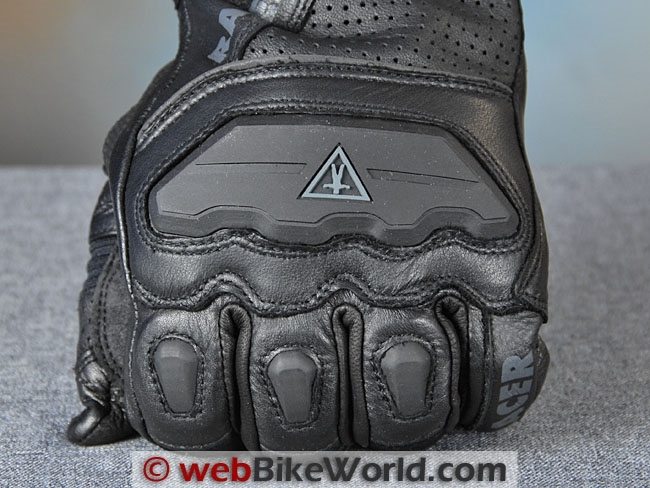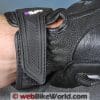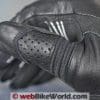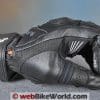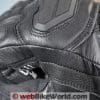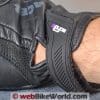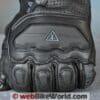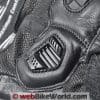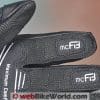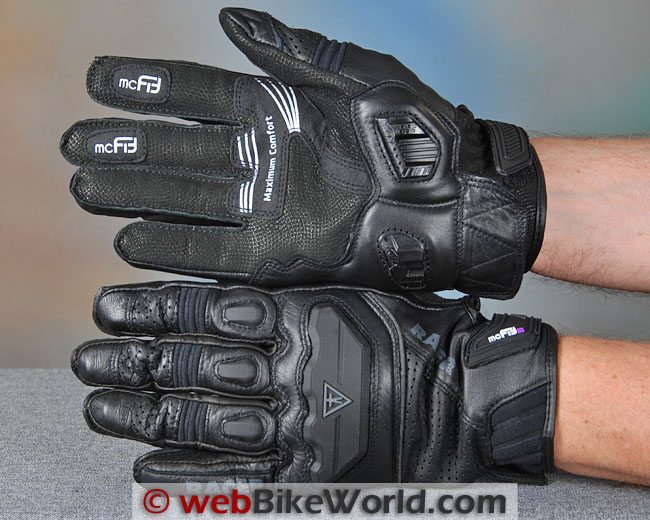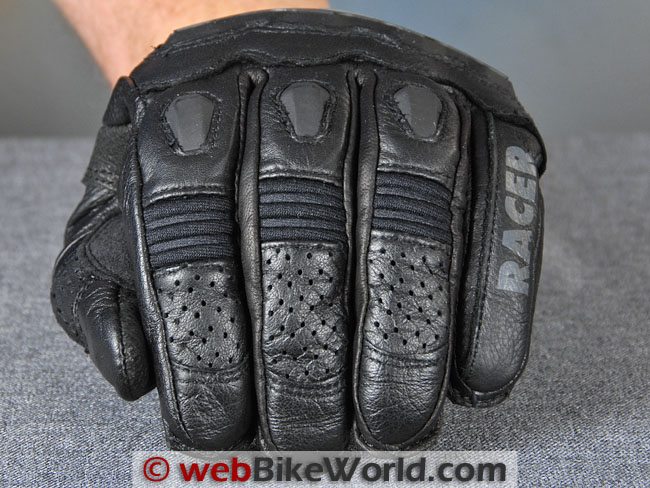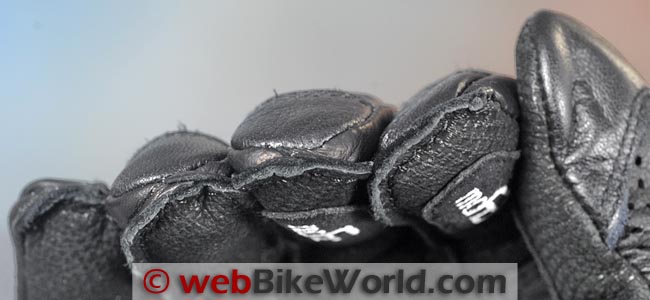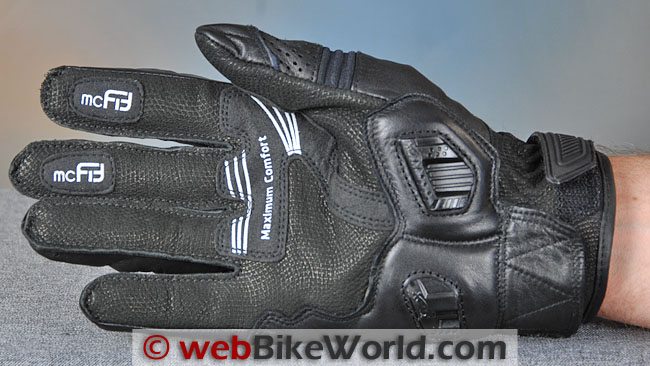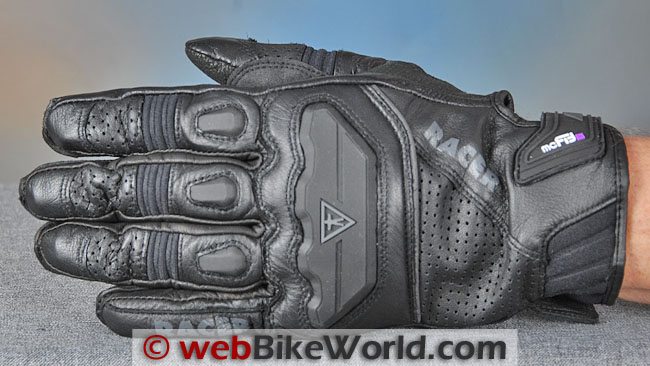The Racer “Guide” Gloves have a short gauntlet and perforated sections for cooler summer riding. The gloves also feature Clarino and goat hide palms and large Knox scaphoid protectors (sliders). The nylon tricot lining is attached using the “mcFIT” (Maximum Comfort Fit Technology) system described in detail in our introduction to the VQuattro gloves review. Perforations on the back of the fingers and top of the wrist provide a nice, cooling air flow.
We found the Guide gloves to fit one size small, requiring a re-order for a size XL, which fits more like a standard size large. Next up in our 2013 Summer Motorcycle Glove Review Series is the Racer Guide summer gloves. Racer is an Austrian-based company (most of the gloves are made elsewhere), known for adding something special to each of their gloves. For example, the Guide gloves use the mcFIT technology to attach the liner to the inside of the glove, which adds comfort and insures a good fit.
Also, the addition of a pair of large Knox hard sliders on the palm make the Guide gloves different from your average run-of-the-mill generic summer motorcycle gloves. These features mean that you’ll find the Racer Guide gloves listed in the “Sport/Racing” category on the main Racer website, not the “Tourers” category. This probably has to do with the hybrid nature of the sport/race style Guide gloves and the included features, like the Knox sliders.
Racer Guide Gloves Details
Choosing a favorite summer glove from the vast Racer catalog isn’t easy, but the Guide gloves have to be right up there at the top.
There’s always a compromise with summer gloves when it comes to the two big features: protection vs. ventilation. More protection means more coverage; more coverage means less air flow.
The Guide gloves hit a happy medium, with Clarino synthetic leather and goat skin for the glove body providing good coverage but with perforations on the back of the fingers and hand.
The Knox scaphoid protectors on the palms, along with softer rubberized main and secondary knuckle protectors on top add more protection.
The entire palm and underside of the fingers is made from what appears to be a textured leather, with Clarino on the wear points at the first and second fingers and the hand grip/thumb area.
The back part of the palm holding the sliders is lightly padded leather or goat hide and the Knox sliders cover both “cheeks” of the heel of the hand. This is a very nice feature that is usually missing from most summer and/or short-gauntlet motorcycle gloves.
Topside, the gloves are all leather or goat hide, with solid sections covering the entire top of the pinky finger and the tips of the first three fingers.
Behind the perforated sections in back of the fingertips is an accordion pleated fabric on the first three fingers, which ends just at the middle knuckles.
Small soft rubber protectors cover the back of the first three fingers and a large main knuckle protector made of the same soft rubber material is on the back of the hand.
I’m not too fond of this soft thermo-rubber stuff that seems to be the fashion lately with many types of motorcycle gloves; I’m not convinced it will protect as well as something harder.
But at least the main protector on the Guide gloves is pretty big and has good overall coverage.
There’s actually a dark type reflective strip of piping along the back of the leather that holds the main knuckle protector that we didn’t see until just now, so I’m not sure how effective it really is, but it’s there…
Racer Guide Gloves Ventilation
The entire palm section of each Guide glove is made from solid sections of the Clarino and goat hide.
But there are some perforated sections between the fingertips and middle segment of the fingers, along with a large perforated section behind the main knuckle protector back towards the wrist.
These are the areas that would be most likely facing the front of the bike as your hands are on the grips and these areas are the primary locations for meaningful air flow.
This will vary, of course, depending on the motorcycle type, whether or not their are hand guards and other factors. But in general, the perforated areas were well thought out by Racer and cooler air can be felt flowing into the gloves.
The short gauntlet also helps, although like most short gauntlets, there can be some interference with different types of motorcycle jacket sleeve cuffs, depending on the jacket design.
Usually the sleeve cuff can be set a bit looser than it would be if worn under a glove with a full gauntlet; if so, this allows air to flow in to the jacket sleeve, which also assists the cooling effect.
Liner and Comfort
The Racer Guide gloves use the “mcFIT” system to attach the lining to the inside of the glove. mcFIT is a unique technology that is used to attach the liner to the glove using a method that hides the stitches for rider comfort.
We’re not sure why the system was used with the Guide gloves, because mcFIT is usually employed to attach a waterproof/breathable membrane to the inside of the glove, to eliminate possible stitch-throughs that would compromise the waterproof integrity of the membrane.
But it works very well in the Guide gloves and there are no stitches or rough edges that can be felt inside the gloves…although the sizing still seems a bit short to us, even in the size XL shown here, which fit more like a snug size large.
Overall Construction Quality
The overall construction and stitching on the Guide gloves is very good, but not outstanding as it is in some other types. Some of the leather edges have “fuzz” or “hairs”, as you can see in the photo above.
The edges for the most part are not rolled before stitching, which would have added to the cost.
There’s nothing wrong with the construction quality; the gloves just aren’t finished to unnecessarily high levels.
The design and stitching on the back of the fingers is very nice, especially the way the different segments are fitted together, from the leather over the fingertips to the perforated section to the accordion pleated section and then to the secondary knuckle protector.
The leather feels a bit thin — don’t forget, these are summer gloves, not full race gloves, so the thickest leather types are not used.
Fit and Sizing
Racer is proud of the way their gloves fit and for the most part, the Racer gloves in this series all have design features that back up this claim.
However, we had to return several pair after using the Racer size chart and ordering a size large, our standard size for glove reviews.
The Guide gloves in size large definitely felt too small; more like a size medium, especially across the knuckles at the widest part of the hand. The size XL shown here fits much like a standard size large.
The fingers are a bit short and my fingertips could use more room, especially noticeable when gripping the handgrips on the bike. The width still seems a bit tight, especially for an XL.
The fingertips use a “blade” style construction, which I find strange on a summer glove.
I think it would have been better if Racer had fitted the Guide gloves with the “two walls, floor and ceiling” style fingertip construction, like that used in the Rukka Vauhti gloves reviewed in Part 1 of this series and typically found on street/touring gloves.
The soft leather in the Guide gloves takes about 2-3 rides before it becomes fully broken-in and this helps. Overall, the Guide gloves are very comfortable, but could be even better if the sizing was correct and the fingertips had a bit more room.
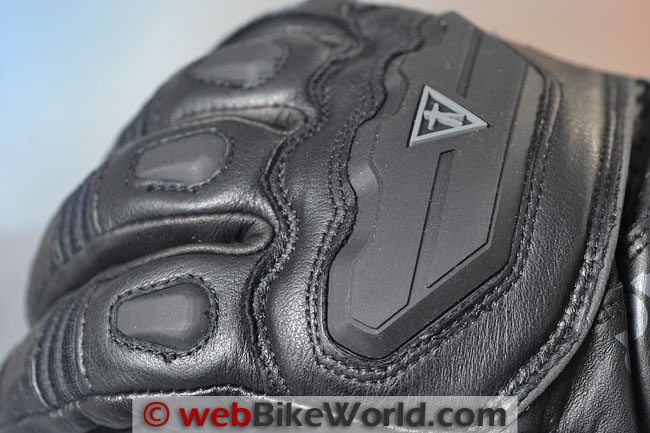
Gauntlet and Closure
The Racer Guide gloves are the short-gauntlet type, which you may or may not prefer. But the short gauntlet does help to keep air flowing into the jacket sleeves, which is a bonus. of course, this is at the expense of the added protection afforded by a full gauntlet.
The gloves have a rubberized section on the wrist as the closure; it attaches with hook-and-loop to secure the gloves. The wrist strap uses only a single thin strip of stitching, which is a concern to me.
I’d prefer a stronger closure system but this one is fairly typical of summer short-gauntlet motorcycle gloves.
The outside of the wrist has a section of elastic fabric, which helps keep the wrist area snug.
An added flap of leather looks like it was originally designed to cover a larger wrist strap but there’s nothing underneath it, so perhaps it just adds some sliding protection to the scaphoid area or “heel” of the hand.
Even with the wrist strap secured, I can pull the Guide gloves off my hand, which is not good in my opinion. The gloves should have a secondary wrist strap, perhaps across the back of the hand, to help keep the gloves secure during a fall.
Although I’ll have to admit that compared to other summer short-gauntlet gloves, the wrist strap system used by Racer on the Guide gloves is typical. It just seems incongruent with the race-type features, like the Knox sliders.
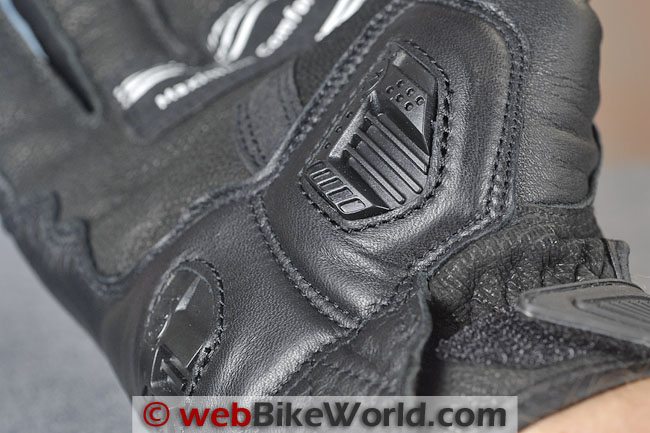
Conclusion
The Racer Guide gloves are comfortable and have fairly good ventilation, considering the other protective features included. The price isn’t too unreasonable and the gloves should work well for summer riding, touring and dual-sport adventures.
I would prefer the wrist strap to be more robust and I’d like to see a second wrist strap across the top, or some method used to ensure that the Guide gloves would stay on the hands during a crash.
I’d also like to see perhaps a thicker leather and more double stitching, although all of this would probably come at the expense of air flow.
But otherwise, the gloves are comfortable and the mcFIT system used to attach the liner effectively prevents the stitches from chafing.
The Guide gloves are much better than many cheaper types of similar-looking summer gloves and the Knox sliders and other features do add protection.
So I’d suggest comparing these carefully to other types if you’re in the market for short-gauntlet summer gloves and you may find that the compromises are worth it.
More wBW: 2013 Summer Motorcycle Glove Review Series
Owner Comments and Feedback
See details on submitting comments.


